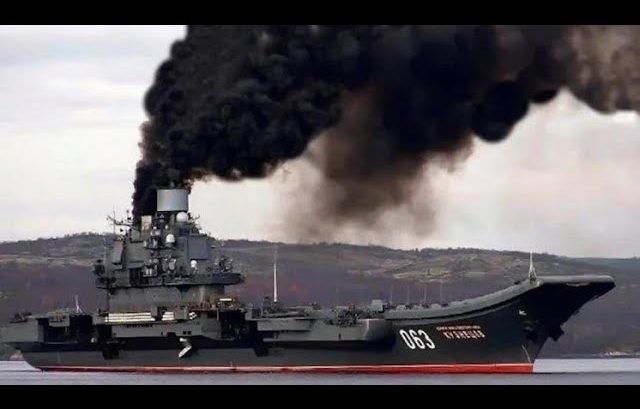Admiral Kuznetsov was an aircraft carrier that served as the flagship of the Russian Navy. Her development was hindered when the Soviet Union was dissolved, even forced to sail for thousands of miles even before it finished.
The Soviets, at this point, didn’t have the means to keep her in optimal conditions. When the USSR fell apart, and Ukraine asserted its newly found independence, they decided to keep it.
However, the Soviets didn’t want to let go of their crown jewel so easily and secretly plotted to retrieve her from the Ukrainians.
Castles in the Sky
In 1973, the Soviets military toyed with the idea of a nuclear-powered aircraft carrier that would be 85,000 tons heavy and capable of accommodating no less than 60 to 70 aircraft.
The ship was laid down in 1983 and launched in 1985. By 1989, the ship was 71% complete and ready to begin aircraft operational trials. However, she was never called an aircraft carrier and was instead designated as an aircraft-carrying cruiser- a crucial distinction that allowed her to cross the Turkish Straits.
Revenge
During the fall of 1991, Ukraine declared independence from the USSR and tensions between the two states began to rise.
The Ukrainian president sent a telegram to the ship’s commander proclaiming that the ship is Ukrainian property. Even so, the Soviets wanted their vessel back.
The vessel would have to leave incomplete and would have to travel thousands of kilometers to a port with no decent infrastructure to sustain her. Regardless, she went on to become the flagship of the Russian Navy.
Purpose
The ship’s design responded to a different mission from that of US carriers. Instead, they primarily aimed to support and defend strategic missile-carrying submarines, surface ships, and Naval missile-carrying aircraft. It also offered protection from hostile ASW aircraft.
Thus, the Kuznetsov is capable of engaging surface, subsurface, and airborne targets.
Bad Luck
The ship was deployed to the Mediterranean from late 1995 to early 1996, officially becoming the flagship of the Russian Navy.
Her deployment was canceled because of the Kursk submarine disaster in 2000. Its service life was then plagued with incidents and aircraft crashes. In September 2005, a SU-33 accidentally slipped to the Atlantic, and the following year, she returned to service, addressing technical issues.
It was only in 2016 that cruiser get involved in the Syrian campaign, although forcefully accompanied by a tugboat to spare her the humiliation of suffering a propulsion failure. It also directed bomber precision strikes but lost another SU-33 that failed to land on the deck after the arresting cables failed to hold the aircraft.
New Combat Potential
Russia struggles to sustain its only carrier and keep her operational. Currently, the vessel is undergoing refurbishments and upgrades to extend its service life.
The repairs of the vessel are said to be done by 2024. The upgrades that she had received enhanced the heavy-carrying aircraft cruiser, and were expected to considerably enhance its combat potential. The Russian Navy hopes to use Admiral Kuznetsov for another 10 to 15 years.



